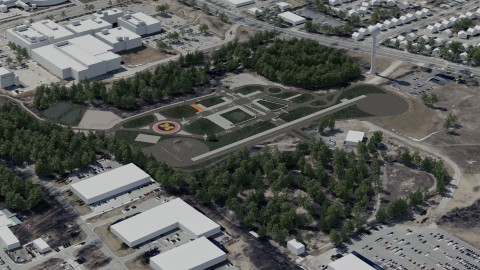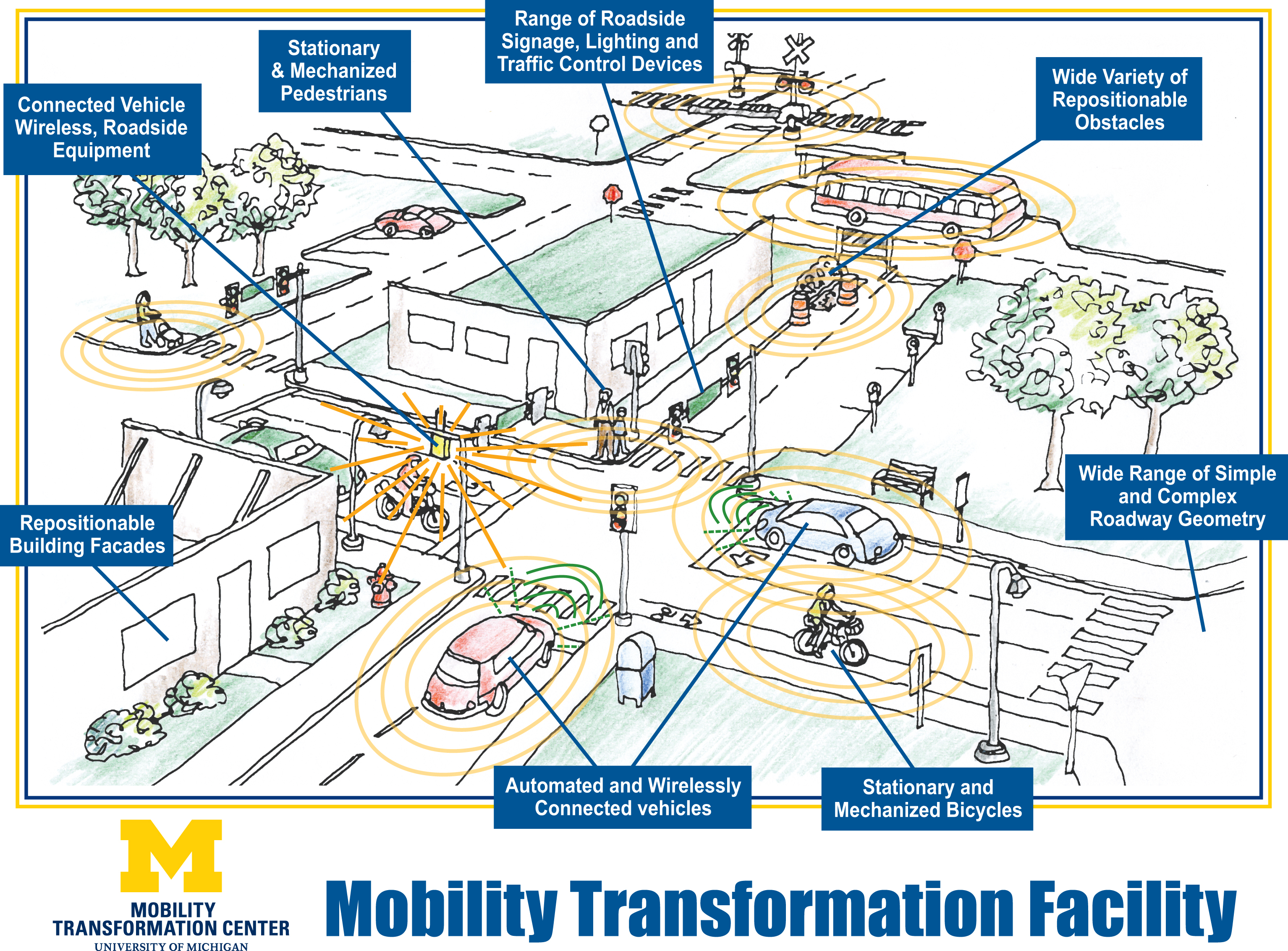Coming this fall to the University of Michigan, a 32-acre section of simulated city and four-lane highway, which will let researchers test how automated and networked vehicles respond to various sorts of traffic events and road conditions.

The facility, located on the University’s north campus, is one of a kind and is seen as a vital step in making sure advanced vehicles are able to operate safely in real world conditions.
The city, referred to as the “Mobility Transformation Facility,” will be operated by the University of Michigan’s Mobility Transformation Center, a public / private group whose goal is change how people and goods get from point A to point B. The College of Engineering is one of several university members that will conduct tests at the center, and two of the college’s robotics researchers will be among its first users.
The Mobility Transformation Facility will have merge lanes, stoplights, intersections, roundabouts, road signs, a railroad crossing, building facades, and construction barrels all throughout; eventually, researchers plan on including a mechanical pedestrian as well. It will model the connected and automated mobility system that the center hopes to have in place in Ann Arbor by 2021.

Researchers believe that a networked system like this, that is, where cars communicate with one another, will help reduce crashes, ease traffic, and reduce pollution and energy use. “We will actually be writing code for the test facility,” said Edwin Olson, an assistant professor of computer science and engineering. “We’ll be able to trigger tricky traffic signal timings, or a pedestrian stepping into the intersection at just the wrong time, for example.”
From Ford’s perspective, company officials say they envision a day when humans sit behind the wheel and the car’s automated technologies enhance the individual’s driving capabilities. Other companies, meanwhile, are looking to remove human involvement entirely, and have the car be responsible for traveling from point A to point B safely.
Either which way, these technologies need to be tested out.
“The type of testing we’re talking about doing — it’s not possible to do today in the university infrastructure,” said Ryan Eustice, an associate professor of naval architecture and marine engineering. “Every time a vehicle comes around the loop, it can hit something unusual. That will give us a leg up on getting these vehicles mature and robust and safe.”
Formal groundbreaking of the Mobility Transformation Facility took place in May, and actual construction is currently underway. An exact open date will be announced at some point prior to Fall 2014.
Story via umich.edu
Advertisement
Learn more about Electronic Products Magazine





